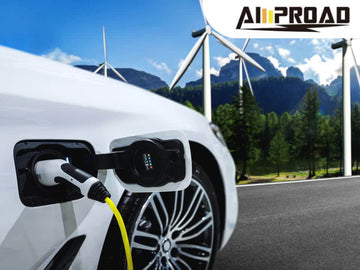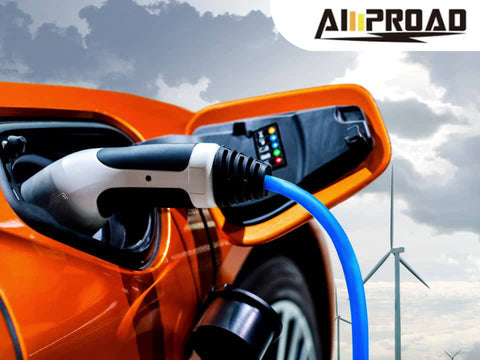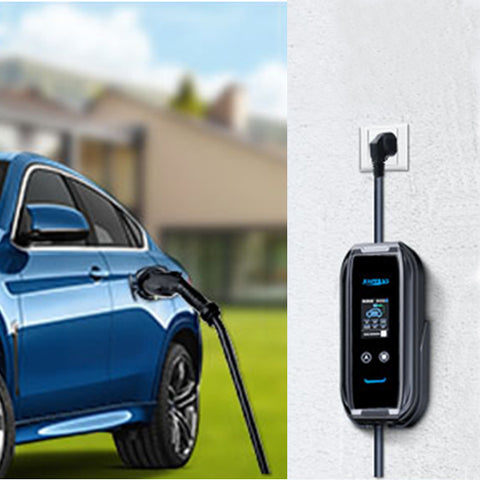
Electric vehicles (EVs) are zooming onto the scene, offering a cleaner and more sustainable way to travel. But with more EVs on the road, a crucial question arises: where will all these vehicles charge? Just like gas stations are essential for gasoline-powered cars, charging infrastructure is vital for widespread EV adoption.
This article dives into the impact of EVs on charging stations. We'll explore the different types of charging stations available, Level 1, Level 2, and DC Fast Charging, and how they differ in charging speeds. We'll also investigate how to find reliable data on the current number of charging stations in the US and how this number is growing to meet the increasing demand. Finally, we'll discuss the significance of this expanding infrastructure for the future of EVs and their potential to revolutionize transportation.
Types of Charging Stations
Charging stations for electric vehicles come in various types, each offering different charging speeds and capabilities. Understanding the differences between Level 1, Level 2, and DC Fast Charging stations is crucial for electric vehicle (EV) owners to make informed decisions about their charging needs.
Level 1 Charging Stations
Level 1 charging stations are the most basic type, typically using a standard 120-volt household outlet. They are convenient for overnight charging at home or in locations where faster charging options are unavailable. However, Level 1 charging is relatively slow, typically adding about 2 to 5 miles of range per hour of charging.
Level 2 Charging Stations
Level 2 charging stations offer faster charging speeds compared to Level 1 stations. They typically operate at 240 volts and require a dedicated circuit for installation, making them ideal for residential, workplace, and public charging locations. Level 2 charging can add approximately 10 to 60 miles of range per hour, depending on the vehicle's battery capacity and charging rate.
Tesla destination charger is a popular type of Level 2 charging station offered by Tesla for use at hotels, restaurants, and other destinations. These chargers are compatible with Tesla vehicles and provide convenient charging options for Tesla owners while they're away from home.
DC Fast Charging Stations
DC Fast Charging stations, also known as Level 3 charging stations, provide the fastest charging speeds available for EVs. They utilize direct current (DC) to charge the vehicle's battery directly, bypassing the onboard charger. DC Fast Charging stations can deliver high-power charging rates, adding approximately 60 to 180 miles of range in as little as 20 to 30 minutes, depending on the vehicle's compatibility and charging capabilities.
Total Number of Charging Stations
The total number of charging stations includes all levels of charging infrastructure available for electric vehicles. This encompasses Level 1, Level 2, and DC Fast Charging stations deployed across various locations such as homes, workplaces, public parking areas, and along highways. To accurately count the total number of charging stations, data from charging network operators, government databases, and other sources must be compiled and analyzed. Additionally, the number of charging stations is continually evolving as the adoption of electric vehicles grows, leading to expansions in charging infrastructure to meet increasing demand.
Data Sources

Accessing reliable data on the total number of electric vehicle (EV) charging stations in the United States is crucial for understanding the current state of EV infrastructure and planning future developments. Several sources provide valuable insights into the availability and distribution of EV charging stations across the country.
Where can we find reliable data on the total number of EV charging stations in the US?
Government agencies such as the Department of Energy (DOE) play a significant role in tracking and monitoring EV infrastructure. The DOE's Office of Energy Efficiency and Renewable Energy (EERE) collects data on EV charging infrastructure through initiatives like the Alternative Fuels Data Center (AFDC). The AFDC maintains a comprehensive database of public and private EV charging stations nationwide, offering detailed information on station locations, types, and accessibility.
Are there government agencies (e.g., Department of Energy) or industry research groups tracking this data?
Industry research groups and organizations also contribute to the tracking of EV charging infrastructure data. Entities like the Electric Power Research Institute (EPRI) conduct research and analysis on EV charging trends, including the deployment of EV charger infrastructure and the integration of EVs into the electric grid. Reports and publications from these groups provide valuable insights into the growth and evolution of EV charging networks.
Can independent organizations monitoring EV infrastructure be helpful resources?
Independent organizations dedicated to monitoring and promoting sustainable transportation solutions can also be valuable resources for accessing data on EV infrastructure. Organizations such as PlugShare and ChargePoint maintain interactive maps and databases of EV charging stations, allowing users to locate stations, view real-time availability, and contribute to crowd-sourced data collection efforts.
By leveraging data from government agencies, industry research groups, and independent organizations, stakeholders involved in EV deployment and infrastructure planning can gain a comprehensive understanding of the current landscape and identify areas for improvement. Collaborative efforts between these entities ensure the availability of accurate and up-to-date information on EV charging stations, facilitating informed decision-making and the continued expansion of EV adoption across the United States.
Current Estimates
Determining the precise number of electric vehicle (EV) charging stations in the United States can be challenging due to various data sources and methodologies used for tracking. However, recent estimates offer valuable insights into the growth and distribution of EV charging infrastructure nationwide.
The most recent estimates for the total number of EV charging stations in the US vary depending on the data source and the timeframe of the analysis. According to the US Department of Energy's Alternative Fuels Data Center (AFDC), as of [insert year], there were approximately [insert number] public and [insert number] private EV charging stations across the country. These figures include Level 2 EV charger and DC Fast Charging stations deployed in various locations, including residential areas, workplaces, and public spaces.
While the AFDC provides a comprehensive database of EV charging stations, other data sources may offer slightly different figures due to differences in data collection methods and reporting criteria. Industry research groups, such as [insert organization], may conduct independent studies or surveys to track EV charging infrastructure, resulting in varying estimates compared to government sources.
Additionally, the rapid pace of EV adoption and infrastructure development means that estimates for the total number of charging stations may change over time. New charging stations are continuously being installed, while existing stations may undergo upgrades or decommissioning. Therefore, it's essential to consider the timeframe and the data sources when comparing estimates for the total number of EV charging stations in the US.
Despite potential variations in estimates, the overall trend indicates significant growth in EV charging infrastructure to support the expanding fleet of electric vehicles. Continued efforts by government agencies, industry stakeholders, and independent organizations to track and monitor EV charging stations contribute to the ongoing development of a robust and accessible charging network across the country.
Growth Trends
Changing Landscape of EV Charging Stations
The number of electric vehicle (EV) charging stations in the United States has experienced significant growth over time, reflecting the increasing adoption of electric vehicles and the expansion of charging infrastructure. According to recent data, the total number of EV charging stations has been steadily rising, with new stations being added to accommodate the growing demand from EV owners.
Contributing Factors to Growth
Several factors have contributed to the expansion of EV charging infrastructure in the US. Government initiatives at the federal, state, and local levels have played a crucial role in incentivizing the deployment of charging stations and supporting the development of a comprehensive charging network. Programs such as the Department of Energy's Workplace Charging Challenge and the Electric Vehicle Infrastructure Program provide funding, technical assistance, and regulatory support to encourage the installation of charging infrastructure in workplaces, public areas, and along transportation corridors.
In addition to government efforts, industry stakeholders, including automakers, charging network operators, and utility companies, have been actively involved in expanding EV charging infrastructure. Partnerships between automakers and charging network operators have led to the installation of charging stations at dealerships, shopping centers, and other high-traffic locations, increasing accessibility for EV owners.
Furthermore, advancements in technology and infrastructure deployment strategies have contributed to the growth of EV charging networks. Innovations such as smart charging solutions, wireless charging technology, and the integration of renewable energy sources have improved the efficiency, reliability, and sustainability of EV charging infrastructure.
Overall, the combined efforts of government initiatives, industry partnerships, and technological advancements have fueled the growth of EV charging stations in the US, supporting the transition to a cleaner, more sustainable transportation system powered by electric vehicles.
FAQs / People also Ask
Q: What is the current number of EV charging stations in the US?
A: The exact number of electric vehicle (EV) charging stations in the US varies depending on the data source and the timeframe of analysis. As of [insert year], estimates suggest there are approximately [insert number] public and [insert number] private EV charging stations across the country.
Q: How has the number of EV charging stations in the US been changing over time?
A: The number of EV charging stations in the US has been steadily increasing over time to accommodate the growing demand from EV owners. Government initiatives, industry partnerships, and technological advancements have contributed to this growth, resulting in the expansion of charging infrastructure nationwide.
Q: Where can I find reliable data on EV charging station locations in the US?
A: Reliable data on EV charging station locations in the US can be found from various sources, including government agencies such as the Department of Energy's Alternative Fuels Data Center (AFDC), industry research groups, and independent organizations dedicated to monitoring EV infrastructure. These sources offer comprehensive databases and interactive maps to help users locate charging stations and access real-time information.




